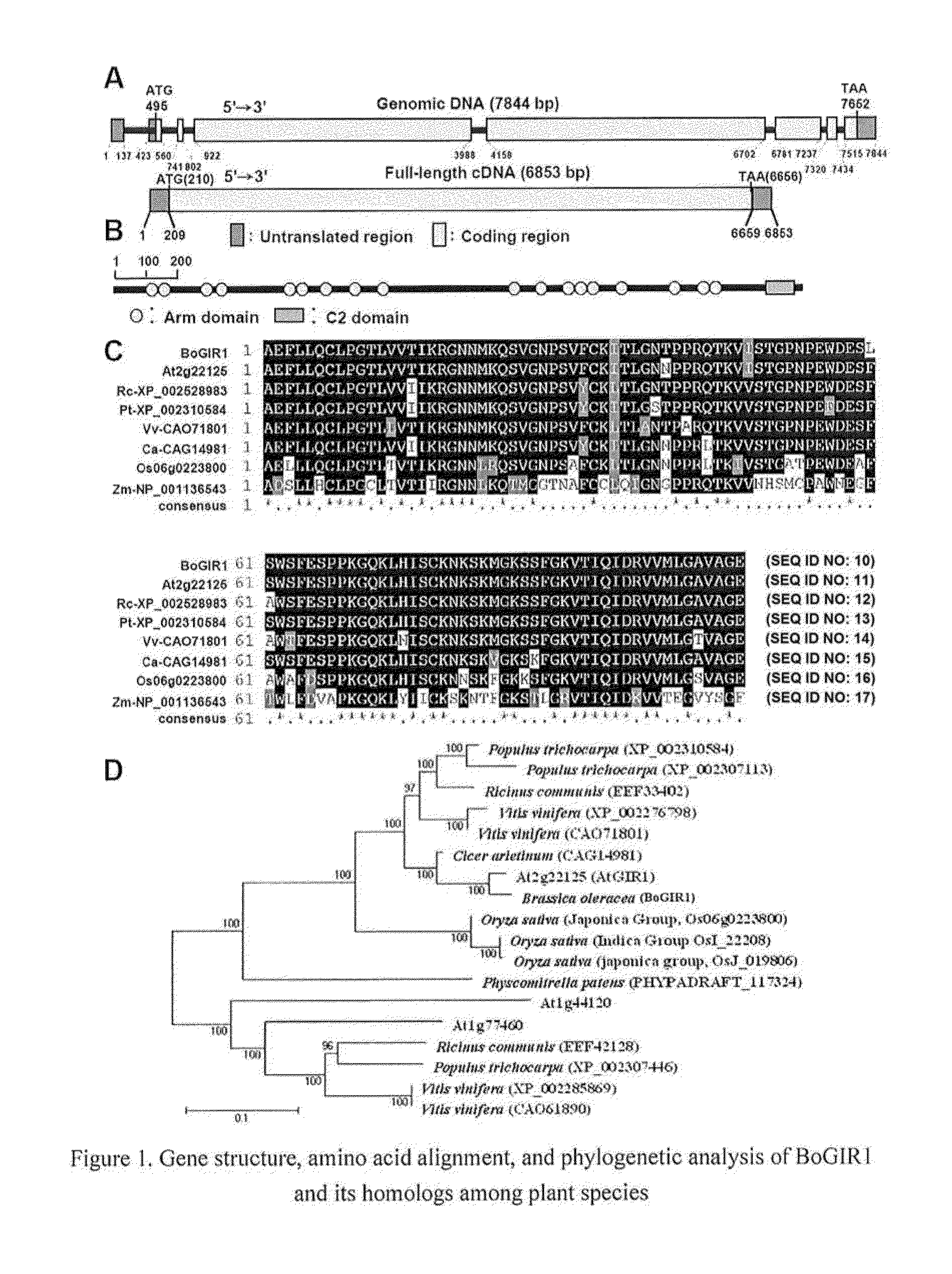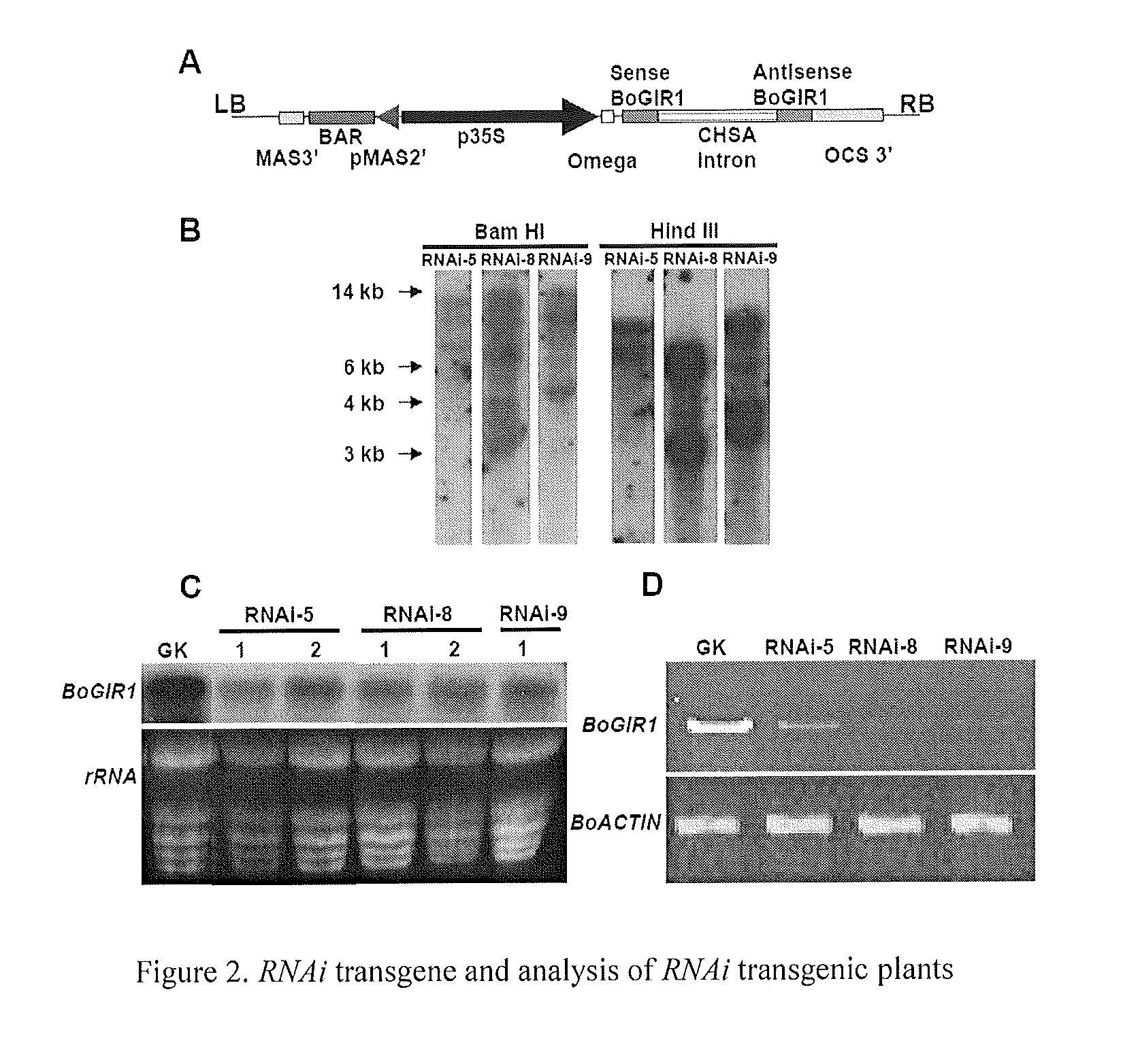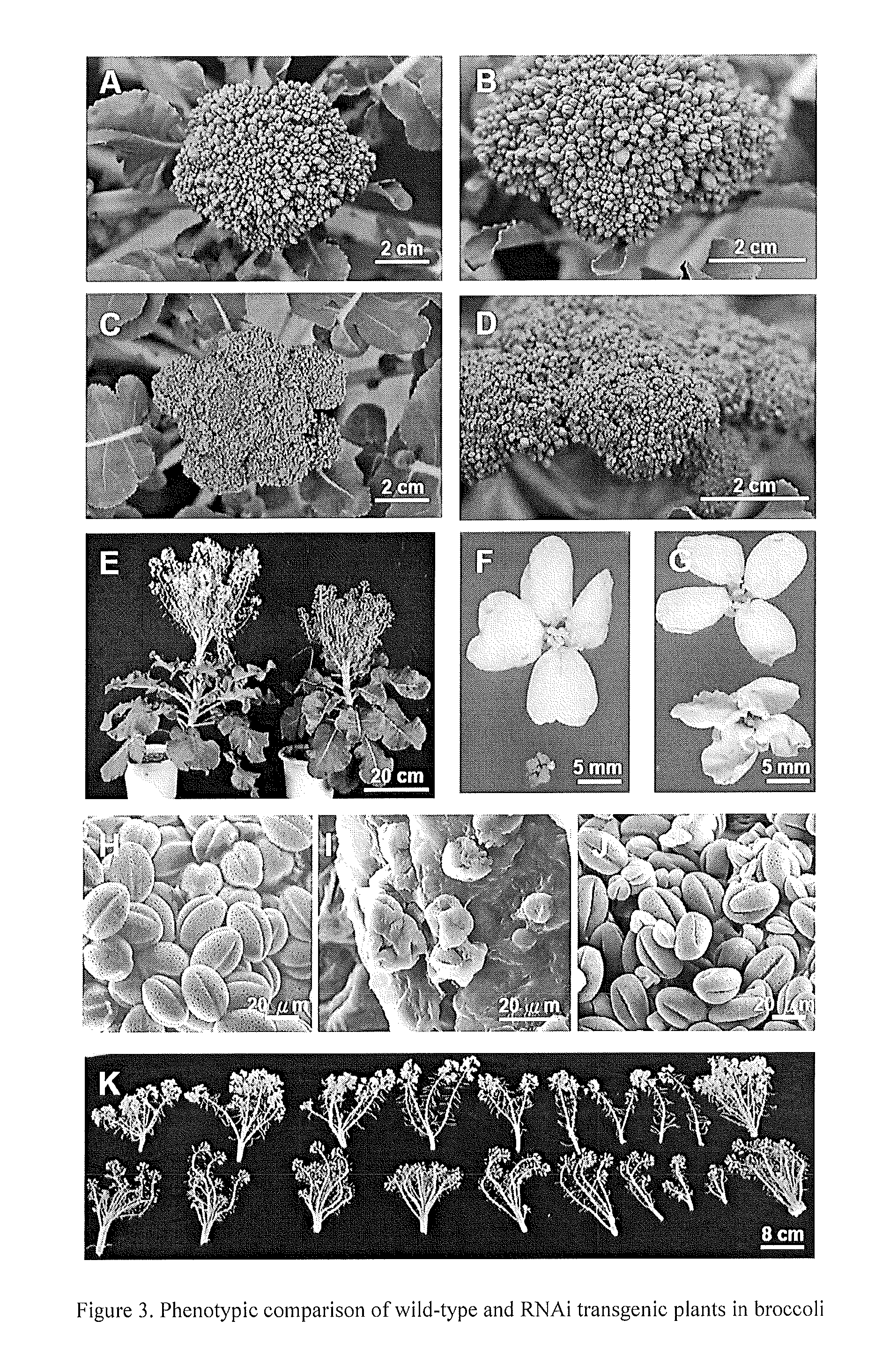Application of the broccoli wound-inducible promoter of glucose inhibition of root elongation 1 gene in transgenic plants
a technology of promoter and promoter, which is applied in the field of transgenic plants using the promoter of glucose inhibition of root elongation 1 gene, can solve the problems of not having a transgenic system suitable for all crops and still relying on complicated screening systems
- Summary
- Abstract
- Description
- Claims
- Application Information
AI Technical Summary
Benefits of technology
Problems solved by technology
Method used
Image
Examples
Embodiment Construction
Plant Materials and Methods
Plant Materials and Growth Conditions
[0033]The plants used in this study were commercial F1 hybrid broccoli (Brassica Oleracea var. italica) Green King (Known-You Seed Co. Ltd., Kaohsiung, Taiwan), Columbia-ecotype Arabidopsis (Arabidopsis thaliana), and rice (Oryza saliva TNG67). For broccoli and rice, seeds were sown in soil and grown in a walk-in growth chamber under long-day conditions with a 16-h light / 8-h dark cycle at 22° C. (for broccoli) or 28° C. (for rice) and a light intensity of approximately 80 μE / sm2. The growth conditions for Arabidopsis have been described previously (Lin et al., 2007)
[0034]For the cloning of the broccoli GIR1 gene, namely BoGIR1 degenerate primers were designed according to the nucleotide alignment of AtGIR1 (At2g22130) with its homologs from rice (Oryza sativa Japonica, AK105686), maize (Zea mays AY104909), and chickpea (Cicer aritinum AJ630655). The ˜1.2 kb At2g22130 was later replaced by At...
PUM
| Property | Measurement | Unit |
|---|---|---|
| pH | aaaaa | aaaaa |
| pH | aaaaa | aaaaa |
| temperature | aaaaa | aaaaa |
Abstract
Description
Claims
Application Information
 Login to View More
Login to View More - R&D
- Intellectual Property
- Life Sciences
- Materials
- Tech Scout
- Unparalleled Data Quality
- Higher Quality Content
- 60% Fewer Hallucinations
Browse by: Latest US Patents, China's latest patents, Technical Efficacy Thesaurus, Application Domain, Technology Topic, Popular Technical Reports.
© 2025 PatSnap. All rights reserved.Legal|Privacy policy|Modern Slavery Act Transparency Statement|Sitemap|About US| Contact US: help@patsnap.com



